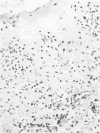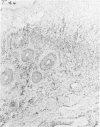Abstract
Two day old piglets were inoculated intravenously with 1 ml of swine vesicular disease virus UK-G 27-72 isolate. Using infectivity tests, immunofluorescent staining and gross and histopathological examination, pathogenesis of the infection was studied in tissue specimens collected daily from one through seven days postinoculation. Swine vesicular disease virus had a strong affinity for the epithelia of the tongue, snout, coronary band and lips, the myocardium and the lymphoid elements of the tonsil and the brain stem. The virus had the greatest affinity for the epithelium of the tongue. However, there was no evidence that the tongue was the initial replication site for swine vesicular disease virus. Prickle cells in the stratum spinosum appear to be the primary targets for the virus. The necrotic foci in the stratum spinosum appeared first, followed the next day by reticular degeneration and multilocular intraepidermal vesicular formation. In the digestive tract and most of the other visceral organs the short duration and sudden drop of the virus titres and the negative fluorescence and pathological findings suggest that these are not important sites for the replication of swine vesicular disease virus in this experiment. The virus was recovered from most of the central nervous tissue specimens. Although the piglets had significant central nervous system lesions, signs of impaired central nervous system function were not detected. However, subtle nervous signs could have been obscured by difficulties in locomotion resulting from severe lesions of the feet.
Full text
PDF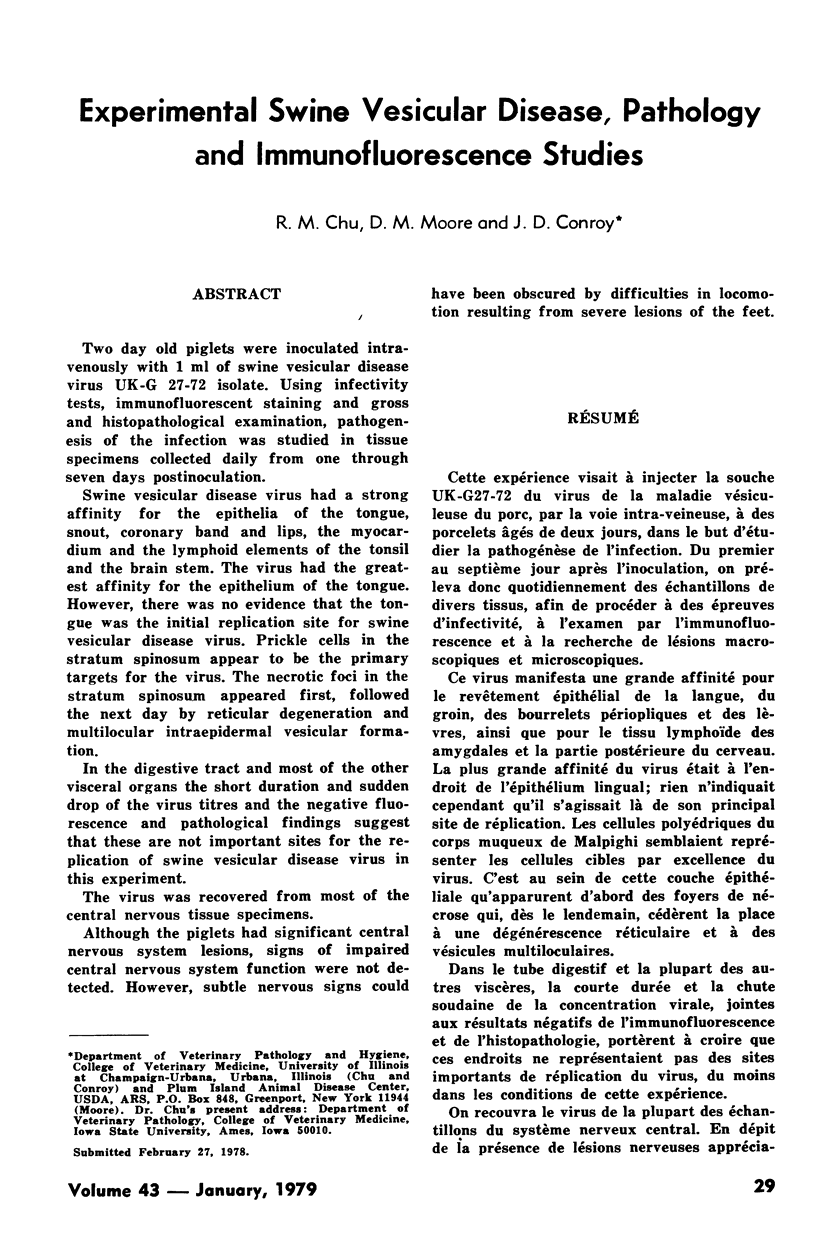
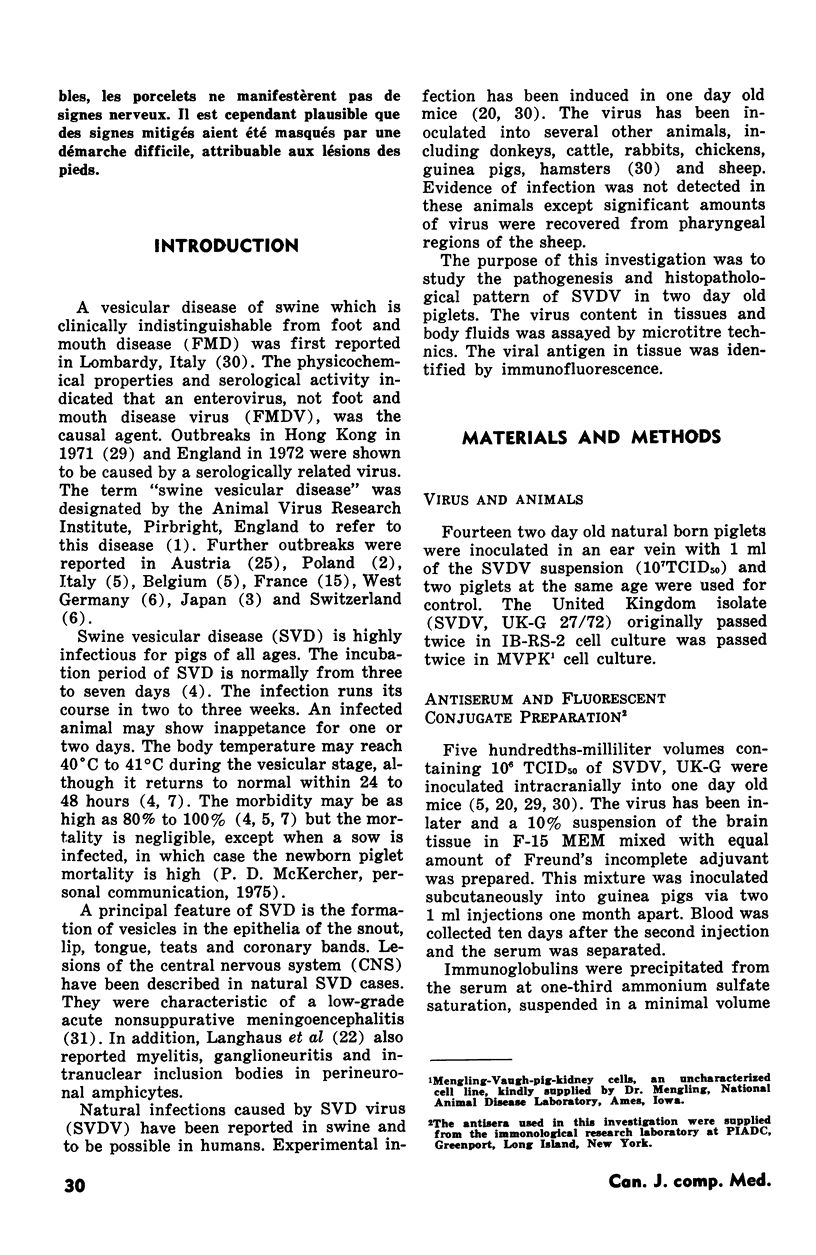
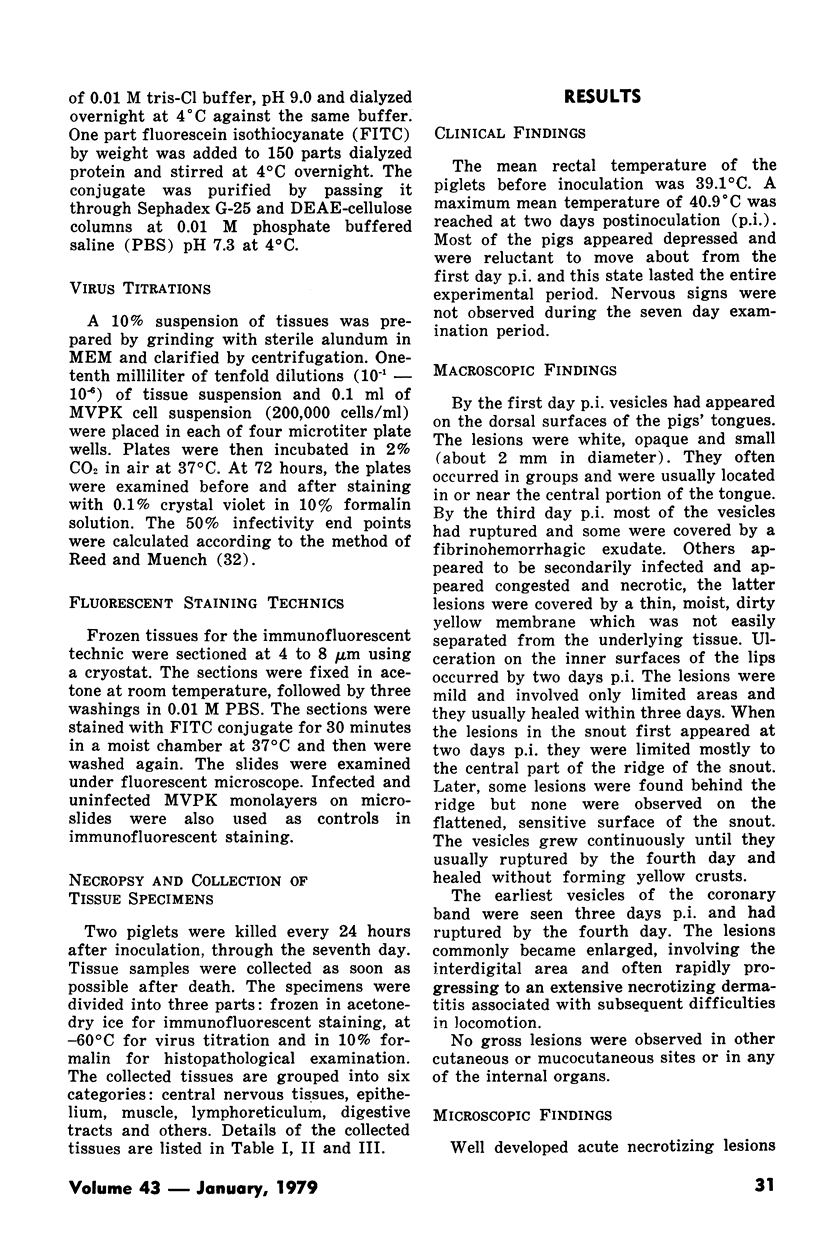
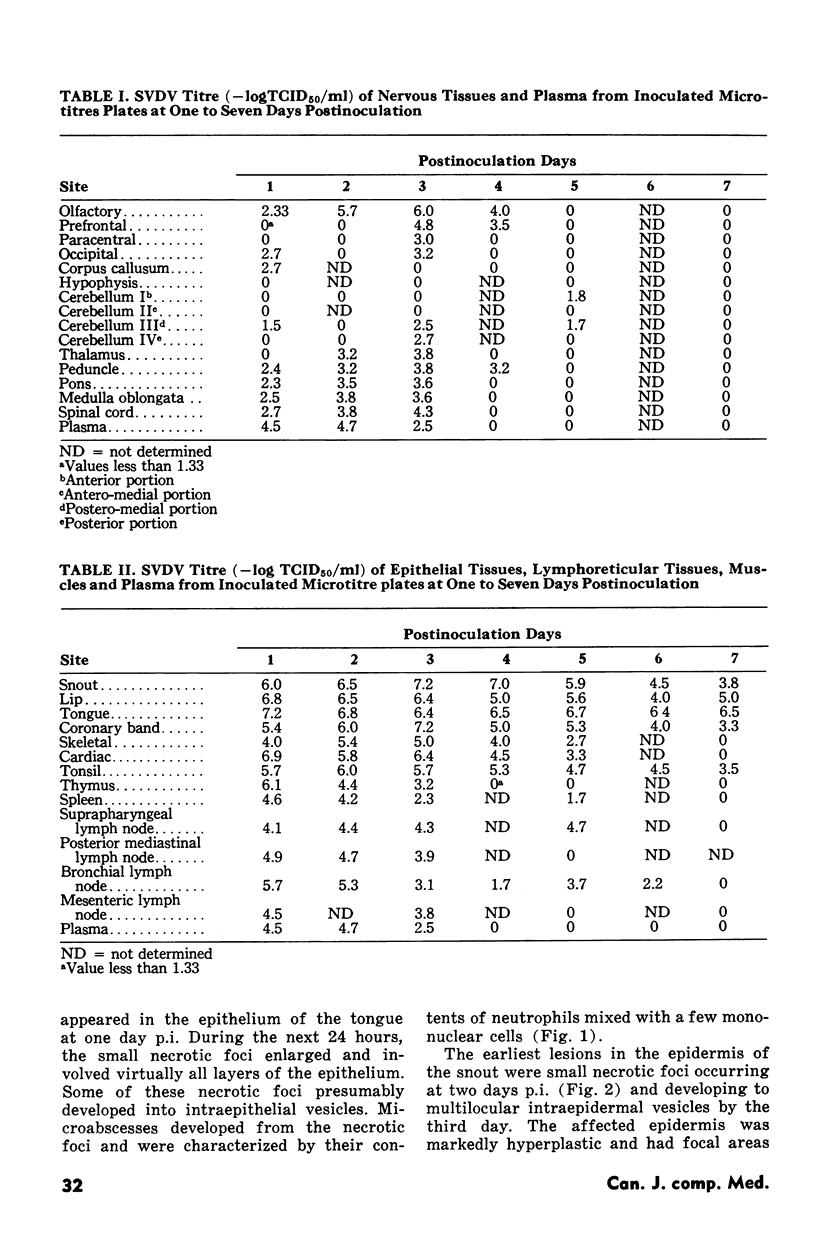

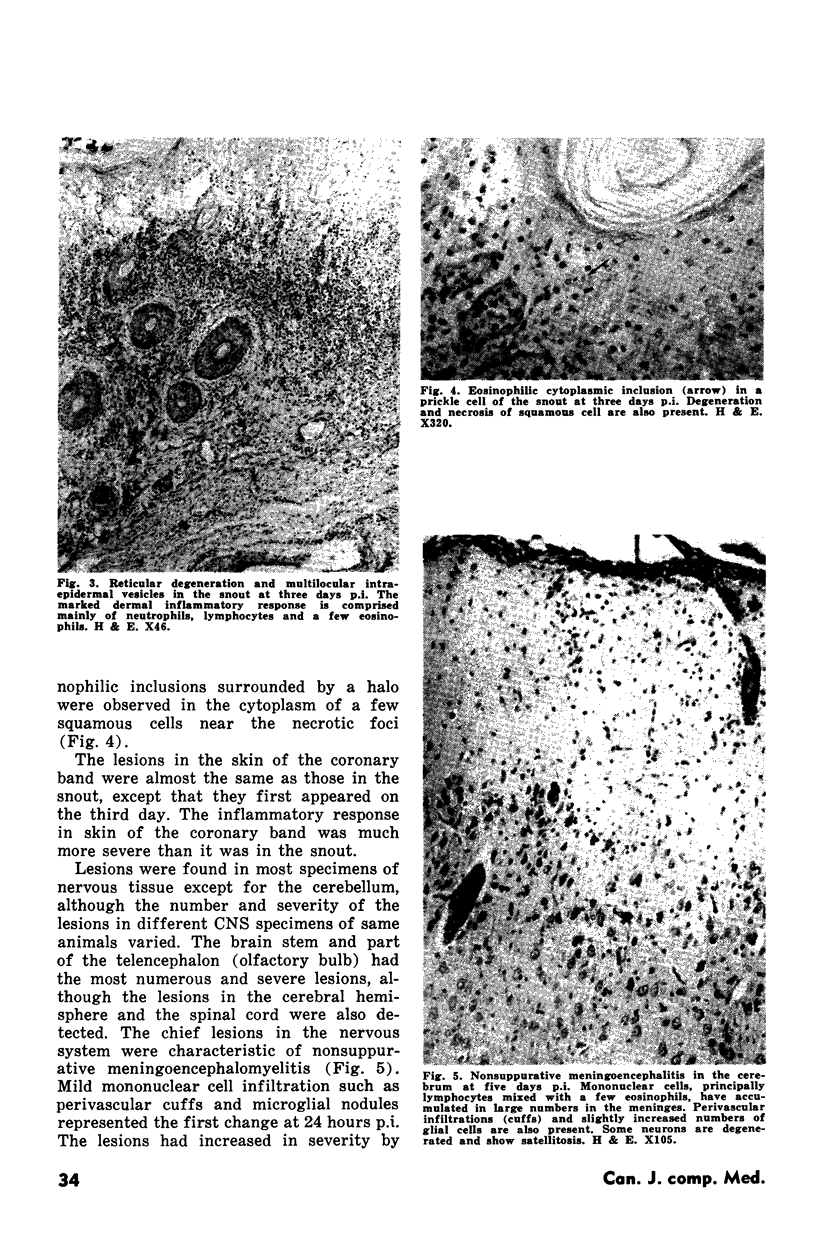
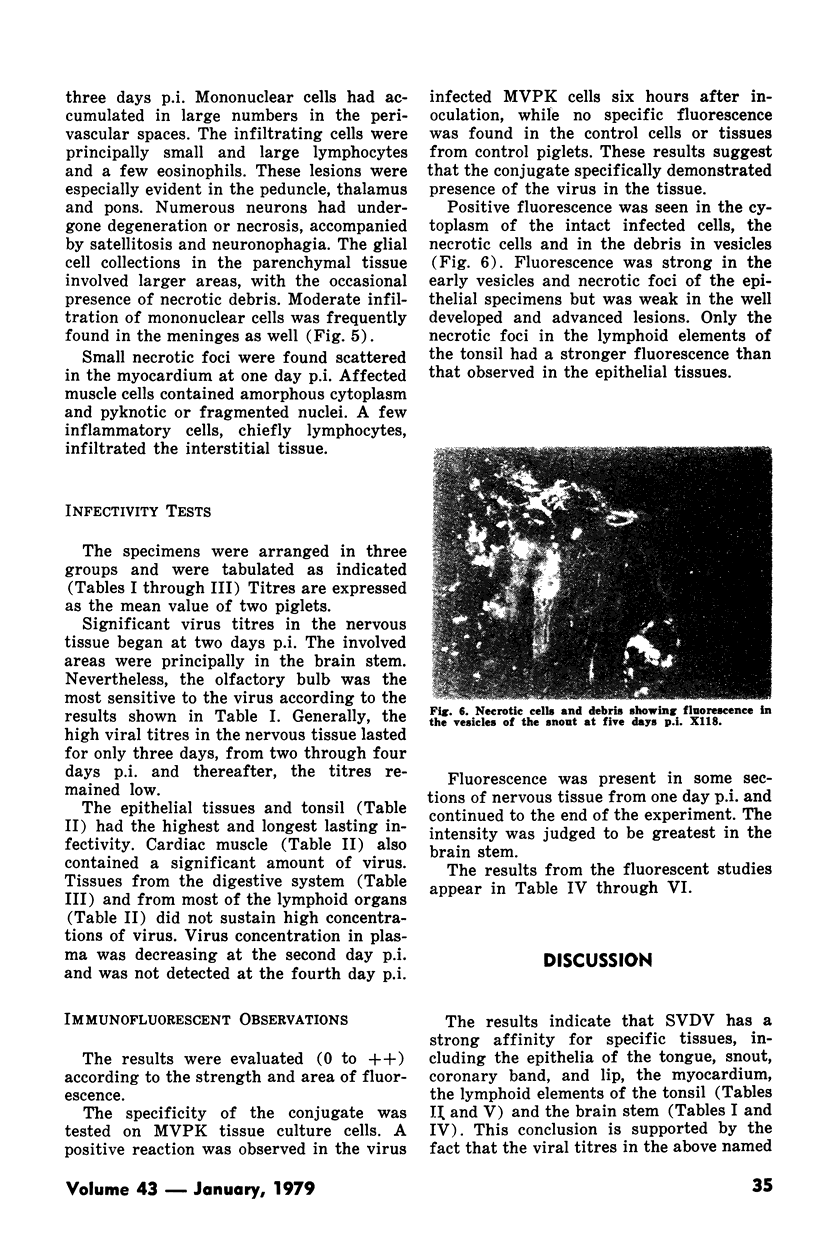
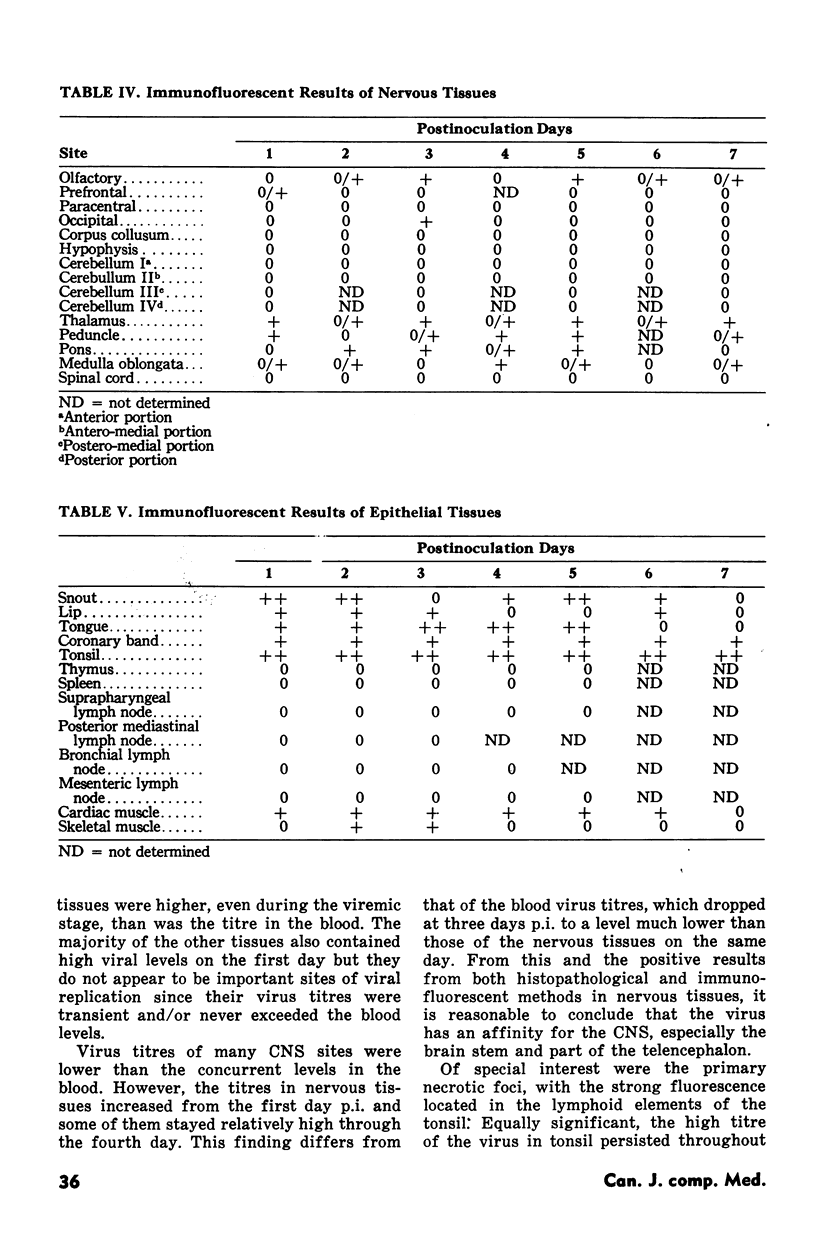

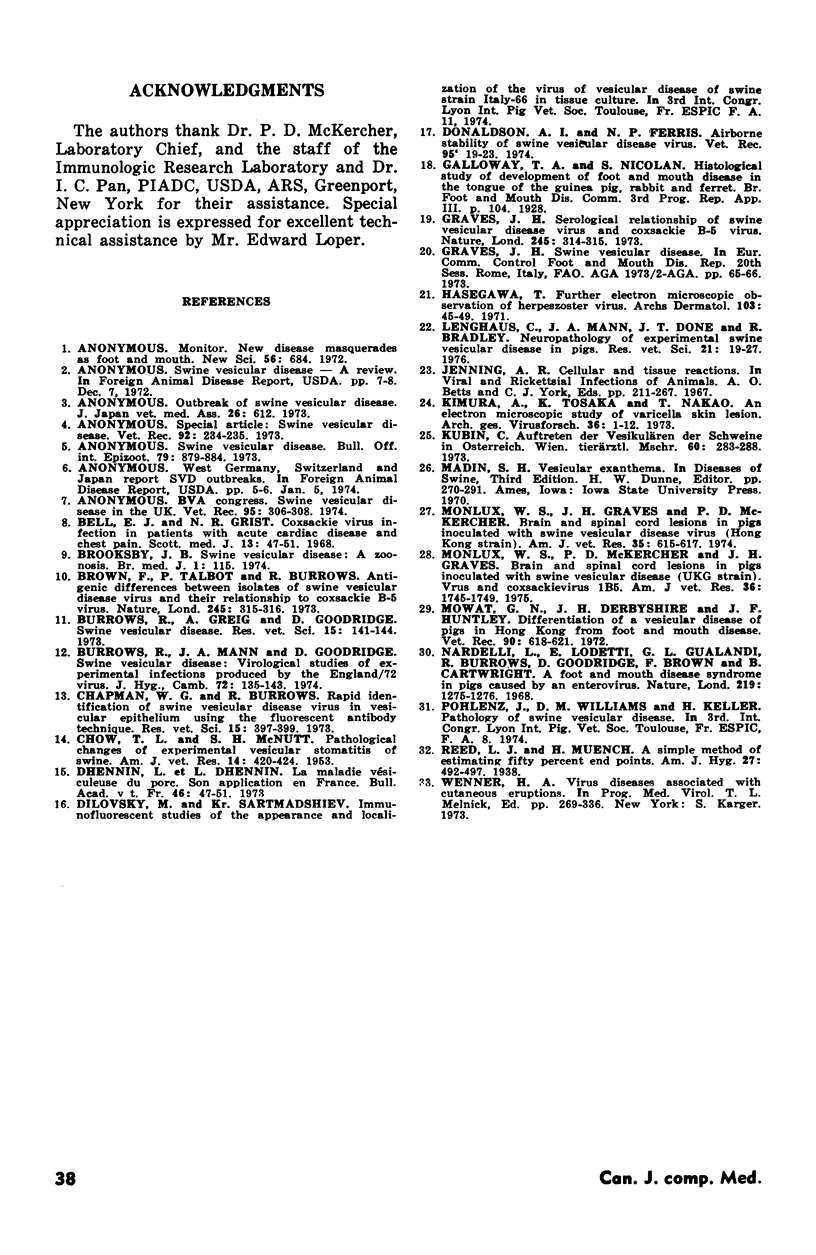
Images in this article
Selected References
These references are in PubMed. This may not be the complete list of references from this article.
- Bell E. J., Grist N. R. Coxsackie virus infections in patients with acute cardiac disease and chest pain. Scott Med J. 1968 Feb;13(2):47–51. doi: 10.1177/003693306801300204. [DOI] [PubMed] [Google Scholar]
- Brooksby J. B. Letter: Swine vesicular disease: a zoonosis. Br Med J. 1974 Jan 19;1(5898):115–115. doi: 10.1136/bmj.1.5898.115-a. [DOI] [PMC free article] [PubMed] [Google Scholar]
- Brown F., Talbot P., Burrows R. Antigenic differences between isolates of swine vesicular disease virus and their relationship to Coxsackie B5 virus. Nature. 1973 Oct 12;245(5424):315–316. doi: 10.1038/245315a0. [DOI] [PubMed] [Google Scholar]
- Burrows R., Greig A., Goodridge D. Swine vesicular disease. Res Vet Sci. 1973 Jul;15(1):141–144. [PubMed] [Google Scholar]
- Burrows R., Mann J. A., Goodridge D. Swine vesicular disease: virological studies of experimental infections produced by the England-72 virus. J Hyg (Lond) 1974 Feb;72(1):135–143. doi: 10.1017/s0022172400023305. [DOI] [PMC free article] [PubMed] [Google Scholar]
- CHOW T. L., MCNUTT S. H. Pathological changes of experimental vesicular stomatitis of swine. Am J Vet Res. 1953 Jul;14(52):420–424. [PubMed] [Google Scholar]
- Chapman W. G., Burrows R. Rapid identification of swine vesicular disease virus in vesicular epithelium using the fluorescent antibody technique. Res Vet Sci. 1973 Nov;15(3):397–399. [PubMed] [Google Scholar]
- Graves J. H. Serological relationship of swine vesicular disease virus and Coxsackie B5 virus. Nature. 1973 Oct 12;245(5424):314–315. doi: 10.1038/245314a0. [DOI] [PubMed] [Google Scholar]
- Hasegawa T. Further electron microscopic observations of herpes zoster virus. Arch Dermatol. 1971 Jan;103(1):45–49. [PubMed] [Google Scholar]
- Kimura A., Tosaka K., Nakao T. An electron microscopic study of varicella skin lesions. Arch Gesamte Virusforsch. 1972;36(1):1–12. doi: 10.1007/BF01250289. [DOI] [PubMed] [Google Scholar]
- Lenghaus C., Mann J. A., Done J. T., Bradley R. Neuropathology of experimental swine vesicular disease in pigs. Res Vet Sci. 1976 Jul;21(1):19–27. [PubMed] [Google Scholar]
- Monlux V. S., McKercher P. D., Graves J. H. Brain and spinal cord lesions in pigs inoculated with swine vesicular disease (UKG strain) virus and coxsackievirus B5. Am J Vet Res. 1975 Dec;36(12):1745–1749. [PubMed] [Google Scholar]
- Monlux W. S., Graves J. H., McKercher P. D. Brain and spinal cord lesions in pigs inoculated with swine vesicular disease virus (Hong Kong strain). Am J Vet Res. 1974 May;35(5):615–617. [PubMed] [Google Scholar]
- Mowat G. N., Darbyshire J. H., Huntley J. F. Differentiation of a vesicular disease of pigs in Hong Kong from foot-and-mouth disease. Vet Rec. 1972 May 27;90(22):618–621. doi: 10.1136/vr.90.22.618. [DOI] [PubMed] [Google Scholar]
- Nardelli L., Lodetti E., Gualandi G. L., Burrows R., Goodridge D., Brown F., Cartwright B. A foot and mouth disease syndrome in pigs caused by an enterovirus. Nature. 1968 Sep 21;219(5160):1275–1276. doi: 10.1038/2191275a0. [DOI] [PubMed] [Google Scholar]



